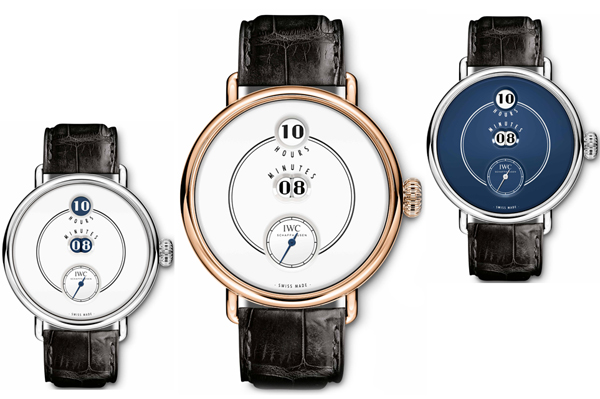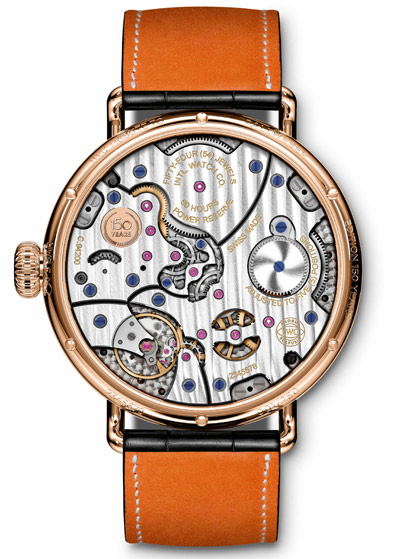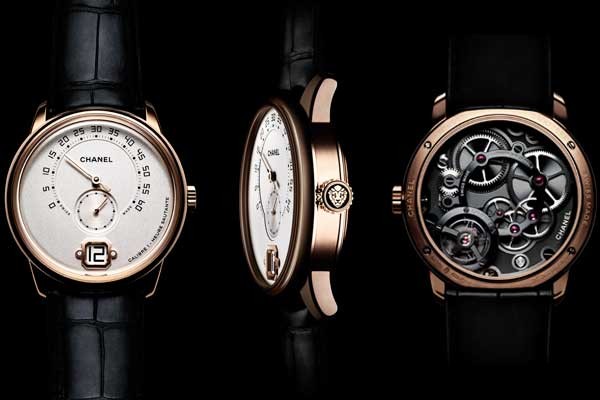Josef Pallweber was an Austrian watchmaker who patented a combined jumping-hour digital display for pocket watches in 1883. He sold licenses to his patent to Cortébert Watch, who were the first to implement it in a pocket watch case, and IWC, who had the greater success with its digital-display pocket watches, producing some 20,000 of them starting in 1885. The success was shortlived, however, as popularity for the watches (which were perhaps ahead of their time) waned. This year, IWC brings back this unique functionality for the first time in a wristwatch with digital hours and minutes. Produced in celebration of the company’s 150th anniversary and available as limited editions in platinum (25), red gold (250) and stainless steel (500), it bears the name “Tribute to Pallweber”, since the rights to the Josef Pallweber name are owned by another Swiss brand that offers watches featuring a design similar to Pallweber’s but without the full complexity.

Jumping mechanisms are notoriously high consumers of energy, so putting three different discs in the same movement is a risk. IWC has, however, improved on the original Pallweber patent by using a separate gear train with its own going barrel to power the single minute disc. A release mechanism connects this with the movement’s main going barrel every minute to move the minute disc forward. Simple demultiplication is then used to advance the ten-minute disc and the hour wheel (60-minute disc). This new system means that the main going train of the watch does not have its energy sapped by the wheel trains powering the rotating discs.

There are two other watches that predate the Tribute to Pallweber which are similar aesthetically if not functionally. The Bell & Ross WW1 Heure Sautante dates back to 2012 and was also offered in platinum at the time. It shares one similarity with the Pallweber design, in that the hours are displayed digitally at 12 o’clock. But the seconds are shown in the conventional way by a central hand, and there is a power reserve indicator at 6 o’clock. At the time, Bell & Ross chose to show the power reserve indication precisely because of the high energy required to power the jumping hour disc.

For its first-ever in-house calibre for a men’s watch, Chanel chose something similar and did not shy away from piling on complexity. Its logically named Calibre 1 consists of a jumping hour indicator in the unusual position of 6 o’clock, an equally unusual centre subdial for the seconds and an off-centre retrograde minutes indication around and angle of 240 degrees, which also requires greater energy for the reset from 59 minutes to 0. As far as the movement finishing is concerned, everything is typically Chanel, with black coatings on the mainplate and all bridges and rhodium-plating for moving parts. Two series-coupled barrels ensure that the Monsieur de Chanel watch that this movement equips can run for at least 72 hours.

These three watches remind me a little of the central tourbillon. Not because of their design but because of their rarity. The patent for the central tourbillon only expired relatively recently, yet Pallweber’s patent dates back to the end of the 19th century. Nevertheless, we see just a handful of watches with this design. In both cases I wonder how much of the reasons for this rarity are down to the technical complexity and how much to customer aversion.









